Loyal, faithful, and beloved are all words that would describe a Senior Dog. Dog owners agree that their senior dog has enriched their life.
Our sweet companion offers us devotion, love and even entertainment. Spending time with your canine companion over the years has made you physically and mentally healthier.
- Life is better with a dog!
Dogs encourage us to keep active and offer us quiet company. The more we learn how to take care of a senior dog, the better we can care for them, enjoy them, and hopefully increase their longevity.
In this article on Ultimate Guide to Dog Care: How To Take Care Of A Senior Dog, you will learn the various aspects of how to take care of a senior dog that differ from adult dogs and puppies. More specifically, the benefits of owning or adopting a senior dog, proper nutrition as they age, common age-related illness, how to keep them active and changes in their grooming needs.
We’ll learn the importance of socialization for senior dogs and how to enrich their lives as they age. You’ll learn how to take care of a senior dog.
Related Articles:
- How to Train Your Dog to Walk on a Leash
- How to Train Your Dog to be Social
- Fun Fact: Bluey, the Australian Cattle Dog holds the Guinness Book of World Records, for living 29 years. Maggie, an Australian Kelpie is the oldest living recorded dog, passing at age 30. Ironically both dogs grew up on a farm in Australia.
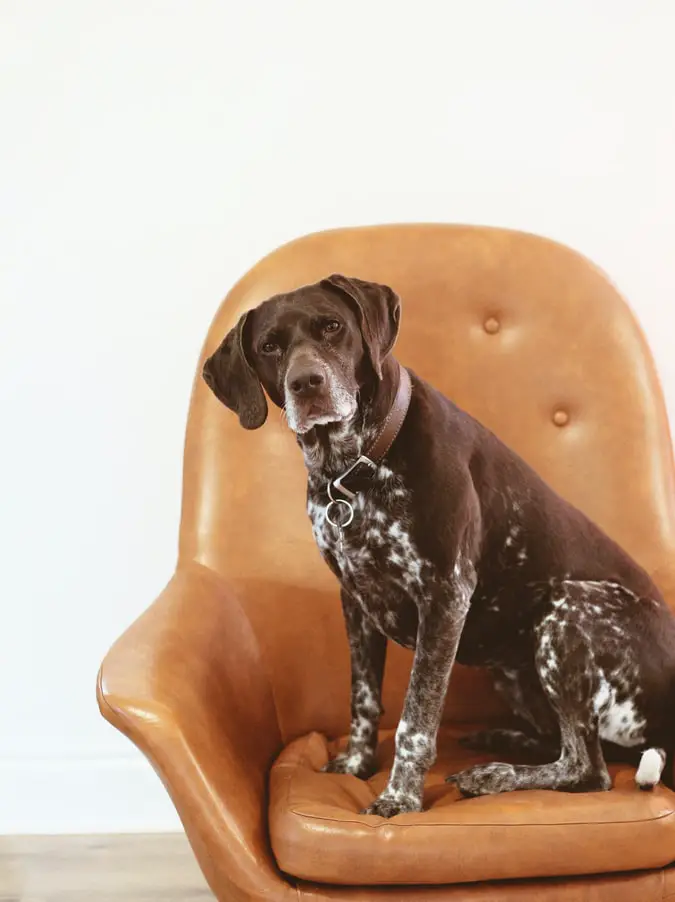
When does my dog become a senior?
The breed and size of your dog determines at what age they become a senior dog.
- Small & medium dogs become seniors around 9 years of age.
- Large size dogs become seniors around 7 years of age.
- Giant breed are seniors around age 5 years old.
When learning about how to take care of a senior dog, you can see first hand they can be active, fun companions for humans. As your dog ages, you have more reasons to love their company.
10 Benefits of Owning or Adopting a Senior Dog
Are you considering adding a dog to your household through adoption? Once you know how to take care of a senior dog, giving them a home could be very rewarding for all.
- Potentially more cuddle time
- Dog’s personality and temperament is known
- Most are housebroken
- No more puppy chewing & destructive issues
- Calmer temperament
- Better manners then younger dogs
- Less exercise regime
- Focus on fun tricks for mental stimulation
- Walks nicely on a leash
- Could be a great puppy mentor
It doesn’t take long to get to know an older dog. They are generally calmer, most are more accepting of human contact, and are content with a warm, safe place to call home. Once you know how to take care a senior dog, you can reap the many benefits.
- Not all senior dogs make good puppy mentors. Sometimes puppies can hurt or irritate an older dog that is suffering from hip and joint issues. An older dog often likes to spend their day napping uninterrupted near their human.
Senior dogs require less exercise, but they still like to get outdoors, it’s your job to be sensitive to how much movement they require and what type of mental exercises stimulate them.
- One key to remember is that aging is a natural process, and not a disease.
Part of knowing how to take care of a senior dog is knowing the history of your dog breed, so you will be better prepared. Unfortunately, some dog breeds are predisposed to illness and health concerns more then others.
Related Articles:
Breed / Gender Specific Aging Concerns
It’s always better if we have previous knowledge of what breeds are predisposed to certain health issues. Quality breeders are aware of these health issues and work hard at minimizing the breed concerns.
Good genes and excellent care play an important role in a dog’s longevity. We often don’t have an option when it comes to the genetic part, but we can provide excellent care by learning how to take care of a senior dog.
Talk with your breeder and your local veterinarian about the special care needed for the health issues in the following 16 breeds.
- Beagle: Seizures can inflict beagles in the form of epilepsy. They often show up in the first three years of the dog’s life.
- Boxer: You’ll want to check these dogs regularly for unusual lumps and bumps. They are at higher risk for cancer in the lymph nodes.
- Bulldog: This flat faced breed can suffer from respiratory issues. They can get overheated and overtired quickly.
- Chihuahua: A common problem in toy breeds like this one is a collapsing trachea.
- Cocker Spaniels: This medium size dog with floppy ears is prone to frequent ear infections. Proper grooming is often a good preventive.
- Dachshund: Due to their physical structure, these long backed dogs can suffer from back injuries and spinal problems.
- Doberman Pinscher: Most vets recommend regular screening for heart conditions such as dilated cardiomyopathy.
- German Shepherd: This large dog breed is prone to hip dysplasia. Inflammation can be detected at an early age.
- Golden Retriever: Prone toconstant scratching and licking due to skin allergies.
- Great Dane: This large chested breed that is at higher risk for bloat.
- Labrador Retriever: This popular dog breed can be prone to hip dysplasia, obesity, and eye concerns like cataracts.
- Poodle: Prone to increased risk for glaucoma, which is a buildup of fluid in their eye, that leads to blindness
- Pug: A flat faced breed that can be at risk for eye problems, the most serious concern is the eyes popping out of socket.
- Rottweiler: This large working-class dog is at risk for hip & elbow dysplasia and arthritis. Feeding a high quality diet is imperative with this breed.
- Shih Tzu: A toy breed that is vulnerable to kneecap issues. The kneecap can pop out of place causing them to wobble and limp.
- Siberian Huskies: Prone to autoimmune disorders such as skin issues, cataracts, glaucoma, and hair loss.
Do female dogs live longer than male dogs?
In general female mammals have a longer lifespan then males. There is not significant evidence to say that is true with canines. In 2018 the British did a study on the longevity of canines. The results indicated that spayed females slightly outlived the males.
What age-related illnesses are specific to female dogs?
Spayed females tend to have a condition called “urinary incontinence” where the dog has an involuntary loss of urine. However, spayed female dogs are at less risk for mammary cancer.
Do neutered males live longer then in-tact males?
Maybe or maybe not, there is not adequate evidence to give a definite answer. Neutered males have a higher rate of hip dysplasia, cranial cruciate ligament tears and certain cancers due to reduced hormone levels.
As canine caretakers we have to make decisions to the best of our knowledge and learn how to take care of a senior dog to give it the best life possible!
Related Articles:
- How to Get the Attention of a Deaf Dog
- How to Train a Deaf Dog to Sit and Stay
- How to Train a Deaf Dog with Hand Signals
- How to Potty Train a Deaf Dog
- Basic Dog Training Commands
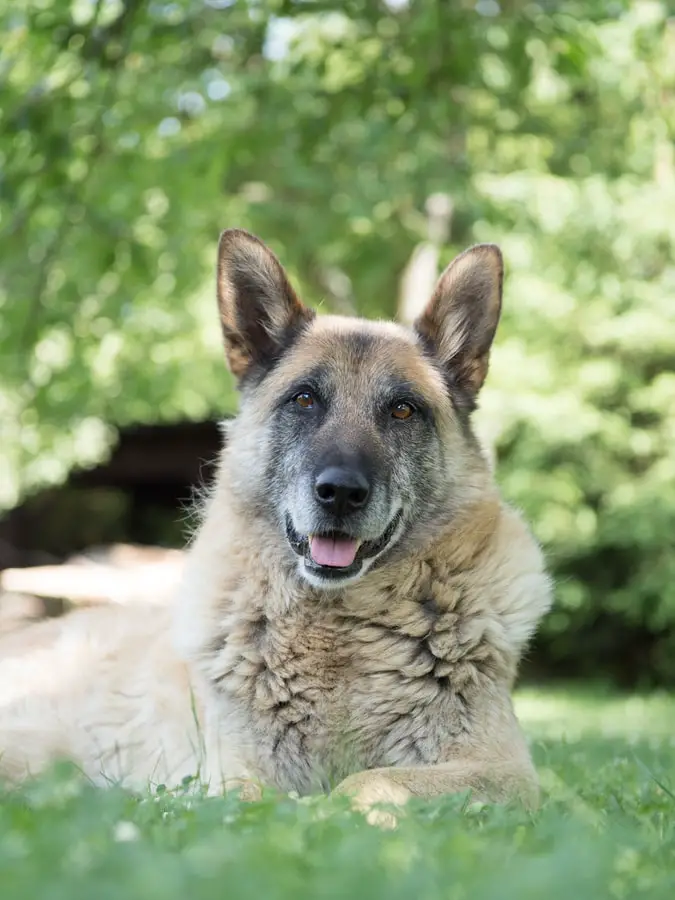
How to Take Care of a Senior Dog and what we need to know about the aging process of dogs
Senior dogs can develop similar physical and mental changes that humans do as we age. Once we know how to take care of a senior dog, we can pay close attention to the changes and offered solutions.
Eyesight changes. Your dog might appear clumsy, they are unable to find their water dish, or they bark at familiar objects or people.
Solution: See a vet for an eye exam, remove clutter, block off dangerous areas (stairs, in-ground pools), tuck in cords, keep dishes and dog beds in the same place.
Increased Anxiety. It can be harder for some dogs to handle stress as they age. Separation anxiety is common in older dogs.
Solution: Take care when having company over to your home, reduce the activity happening around them, continue mental stimulation, and consider massage therapy.
Reduced hearing. Your dog might not move around as much, might startle easily, and appear to be disobeying a command.
Solution: If you know your dog is genetically susceptible to hearing loss, begin with hand signals early, use taps on the floor to get your dog’s attention, as they can feel vibrations.
Sensitive to temperature changes. As your dog ages, it’s harder for them to regulate their body heat, whether it be too hot or too cold.
Solution: Monitor your pet’s environmental temperature. Provide soft orthopedic beds to stay warm and cooling mats in the heat. Make sure their bed is not in a drafty area of the home.
Achy joints. Inflammation around their joints and hips can be painful. If they had an injury from their younger years, that area could be causing more aches and pains.
Solution: If you have a breed that is suspectable to arthritis and joint issues, start them on chondroitin and glucosamine with vitamin C at a young age. See your vet for recommended pain relievers. Massage therapy can reduce inflammation and increase circulation. Reduce the need to climb stairs and offer an orthopedic dog bed.
Confusion. Your dog might forget simple things like how to navigate around the house, or they appear lost. They might not make it to the door to indicate they need to relieve themselves.
Solution. Patience. Continue with mental stimulation activities. Take them out to urinate more often. Offer a crate for a safe place when you are absent.
Related Articles:

How to Take Care of a Senior Dog and Nutritional Needs & Supplements
Older dogs will need a diet that fulfills their unique nutritional needs as they age. It’s important to learn how to take care of a senior dog nutritional. Healthy senior dogs need more protein to maintain muscle mass and a healthy weight.
Kibble feeders: When striving to how to take care of a senior dog, read the label and aim for 28-32% protein.
What is different about dog food designed for senior dogs?
It varies from one dog food company to another, there is no standard for “senior” dog food. Senior dog food should have fewer calories, less fat, more fiber, and more antioxidants.
When do I switch from adult dog food to senior food?
It depends on your dog’s health, current weight, and breed. If you are currently feeding your dog a diet rich in quality protein, low sodium, high fiber, and antioxidants there is no hurry to make the switch.
- If you have questions about your dog food, contact the dog food manufacturers. Ask them about sodium, phosphorus, and protein levels. It’s best to find out the credentials of the people formulating their brand of food.
How to Take Care of a Senior Dog and Feeding Concerns
Appetite changes. When dogs are in pain, they might not feel inclined to eat. Monitor your dog for signs of feeling uncomfortable. Make their dog food palatable, by adding chicken broth or mixing in sodium free sardines.
Obesity. As a dog ages, their activity level decreases and their metabolism changes. Both factors can lead to weight gain in your dog. Senior dog’s do not need high carb people food. If you like to share a snack with your dog, chose carrot sticks, blueberries, or green beans.
Loss of Teeth. Your dog might have had a few teeth pulled as they age. Be sensitive to this change and choose small soft kibble. For texture sensitivities, soak the kibble in warm chicken broth or water before serving. You can add more or less liquid depending on your dog’s ability to eat.
Why is a lower sodium diet important for a senior dog?
If you have a dog that is prone to heart disease or was diagnosed with heart disease, you’ll want to be careful with their sodium consumption. Dogs, like humans, still need sodium. In the case of heart disease, it’s best to talk with a veterinary nutritionist.
Related Articles:
- The Best Canned Dog Food for Dogs with Sensitive Stomachs
- A Review Of The Top 5 Best Tactical Dog Harnesses
- How to Build an Outdoor Dog Potty Area on Concrete
- A Review Of The Top 5 Best Dog Clickers
How to Take Care of a Senior Dog and 5 Tips for Improving Your Senior Dog’s Diet
Become a label reader. Product labels list the ingredients in order, from the greatest amount to the least amount. If you’re not familiar with an ingredient, or you are unsure if it’s healthy for your dog, do a quick internet search.
Increase Fiber. Start with small portions. Pureed pumpkin, carrots, ground flaxseeds (not whole), powdered kelp, and berries in small quantities can be incorporated into their diet.
Consider purified water. Most tap water contains over 100 different chemicals. Clean water is important to your dog’s longevity.
Homemade Chicken Broth. Naturally low in sodium, nourishing nutrients, natural form of collagen and aids in digestive health.
Clean dishes. Wash your dog’s food and water dishes daily. Vinegar works well as a chemical-free solution that will not leave a soapy residue in the dishes.
How to Take Care of a Senior Dog with Supplements
Consult with a veterinarian nutritionist or canine nutrition specialist for specific dosage recommendations.
- Digestive supplements like powdered prebiotics / probiotics. They aid in digestion and absorption of nutrients.
- Antioxidant supplements/food boosters nourishes their coat & skin. It improves memory and cognitive function in older dogs.
- Omega-3’s are vital to brain, skin and joint health. They help combat osteoarthritis and reduce inflammation.
- Natural hip and joint supplements that contain glucosamine, chondroitin, MSM. Including vitamin C, as that allows the dog to absorb the ingredients.
- As with all supplements, follow the manufacturer’s dosage recommendations based on your dog’s weight and size.
How do I incorporate Omega-3’s in my dog’s diet?
Organic cold-pressed hemp oil can be drizzled on their food. Purchase sodium-free sardines packed in water and serve with their meals. Powdered kelp and boiled eggs both contain Omega-3’s.
Once we learn how to take care of a senior dog, we can provide proper nutrition and supplements for our special canines. Our goal is to keep them at a healthy weight for better mobility and lower inflammation.
Related Articles:
- How to Cook Marrow Bones for Dogs
- A Review Of The Top 5 Best Bone Broths for Dogs
- A Review Of The Top 5 Best Dog Whistles
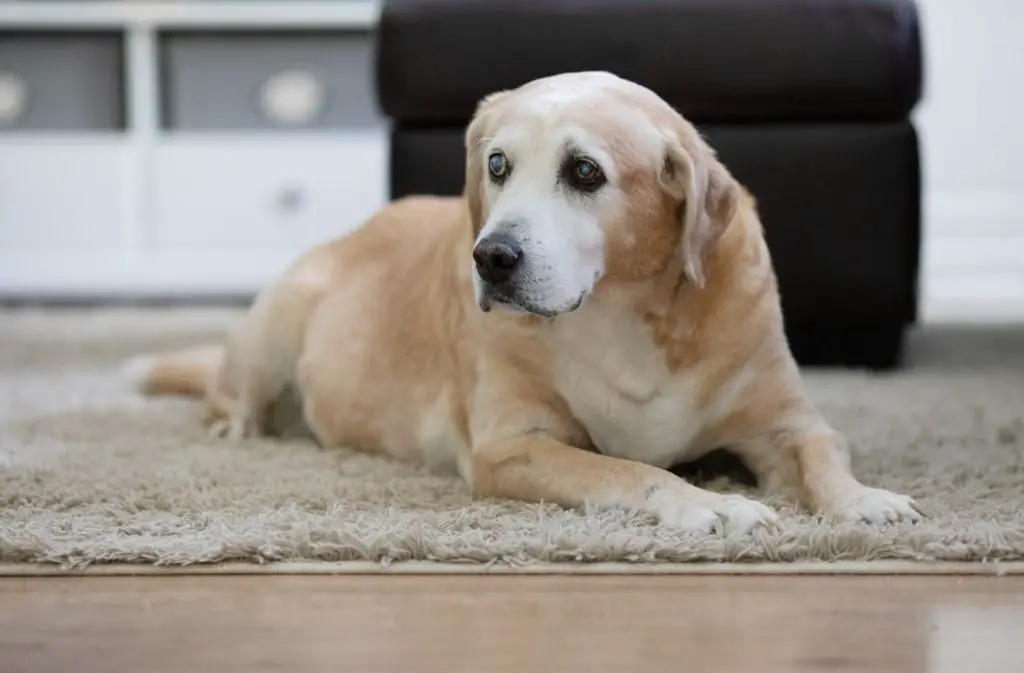
How to Take Care of a Senior Dog and Managing Accidents
Usually, older dogs are past the house training stage, however this may not always be the case. Here you can learn how to take care of a senior dog that has accidents in the house.
Why do senior dogs lose control of their bodily functions?
Senior dogs can forget where the door is to be let outside, or what it means when you direct them outside. They will also have decreased bladder control.
Physical issues that relate to decreased bladder control are due to a loss of hormones in a spayed or neutered dog. Loss of muscle tone and neurological disorders can also contribute to lack of control.
Relevant Articles:
- Ultimate Guide: How To Take Care Of A Puppy
- Ultimate Guide: How To Take Care Of A Dog
- The Benefits of Owning a Dog
- Top 12 Tips for First Time Dog Owners
Supplies that make life easier:
- Washable waterproof hospital pads
- Easy to use mop
- 20 Mule Team Borax – washing detergent
- Disposable dog diapers
Q. How to take care of a senior dog that leaks urine after getting up from a nap?
A. Use large waterproof hospital pads to cover their napping areas. These large washable pads can be laid in their dog crate, over a couch or on top of area rugs.
Q. What is the best way to clean up messes inside the house?
A. Use cleaning supplies that do not contain bleach or ammonia. Many household cleaners contain ammonia which closely resembles the scent of urine to a dog. Thoroughly cleaning the accident spots with an enzymatic cleaner will eliminate lingering odors.
Q. What about using doggie diapers?
A. Doggie diapers could be just the solution you need for transporting your dog from one place to another. Older dogs may leak urinate as they are walking to the car or while being transported. It’s important to change the diapers right after an accident as occurred, so the dog doesn’t get urine scald.
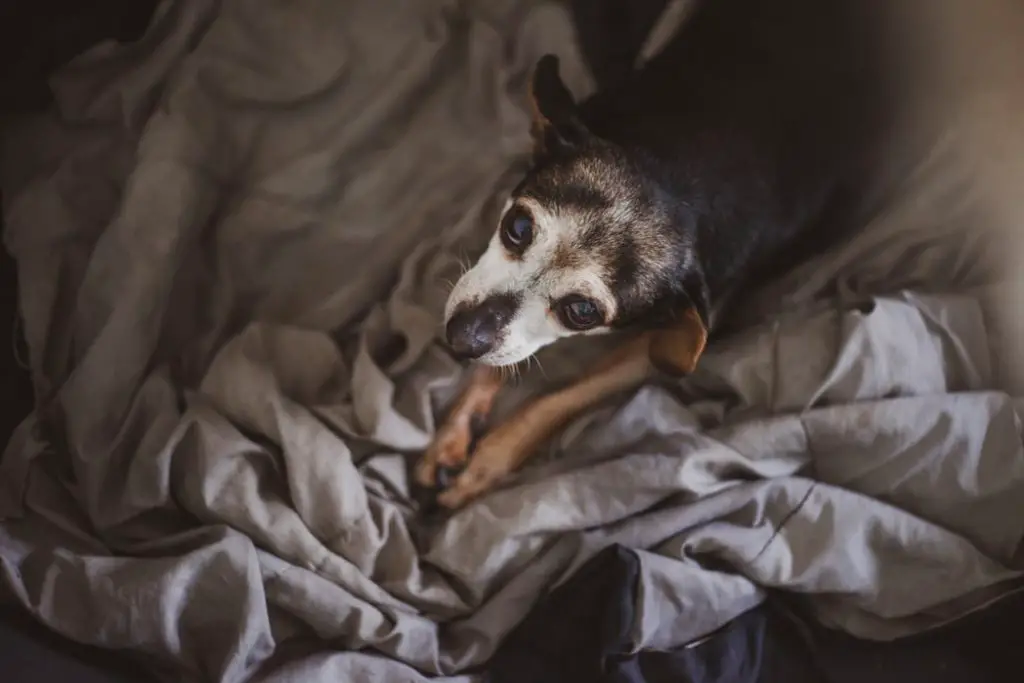
3 Tips on How to Take Care of a Senior Dog and Managing Accidents
- Keep a routine. Dogs thrive on humans being predictable. Go on walks at the same time each day, feed them on a schedule and have definite elimination times.
- Keep a routine. Dogs thrive on humans being predictable. Go on walks at the same time each day, feed them on a schedule and have definite elimination times.
- Keep a routine. Dogs thrive on humans being predictable. Go on walks at the same time each day, feed them on a schedule and have definite elimination times.
When you learn how take care of a senior dog, be patient and try to find solutions to make them comfortable. One area that will keep them feeling physically and mentally younger is exercise.
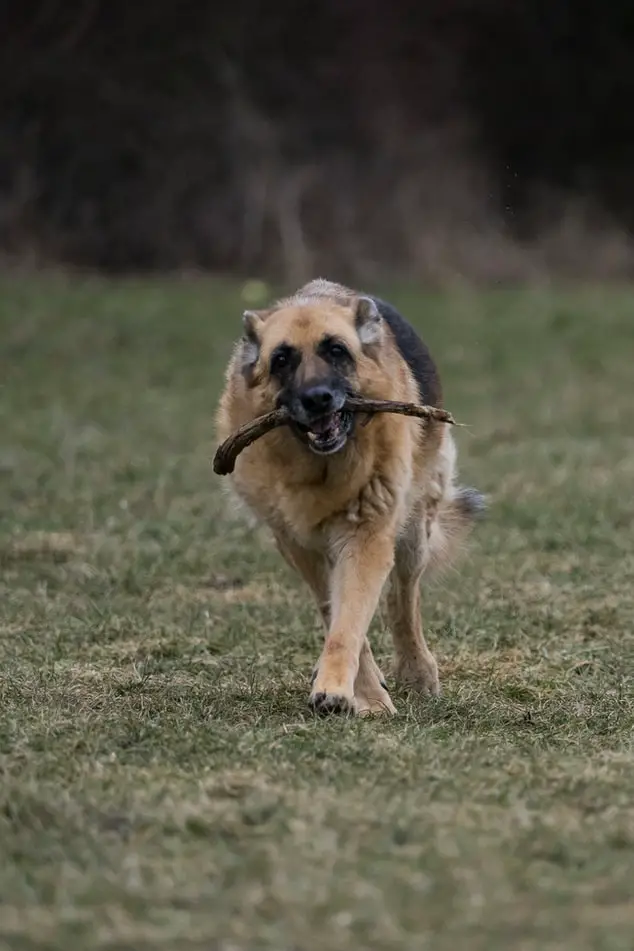
How to Take Care of a Senior Dog with Exercise & Stimulation
Your senior dog will thrive on daily physical and mental stimulation. Physically your older dog will maintain a healthy weight, great muscle tone and healthy metabolism.
- Both mental exercise and physical exercise are important for a happy, healthy dog!
Physical exercise can be done in many ways, in the form of intentional games or structured activities like walking and swimming.
Related Articles:
How to Take Care of a Senior Dog with Physical Exercise
Exercise leaves a dog satiated and that is another key on how to take care of a senior dog. On the average, active dogs need a minimum of 30 minutes of daily exercise.
How to Take Care of a Senior Dog and 5 Tips for Exercise
- Regular routine exercise.
- Let them set the pace.
- Exercise indoors when it’s too hot or too cold outdoors.
- As they age, keep familiar routes for your dog.
- Gentle exercise will be beneficial for aging joints and muscle tone.
How to Take Care of a Senior Dog with Mental Exercise
You can exercise their mind with good mental games! There are several mentally challenging games you can engage in with your dog. Quiet mental games can be of great value as well.
Find It. Choose a favorite toy or high value treat. Show your dog the item and then place it a few feet away from them. Then say, “Find it”. Once you think they have grasped that step, keep extending the distance. Eventually you can hide it under a bowl or place it in a different room. Always have them begin at the same place each time, such as a small rug or dog bed.
Tricks. Old dogs can learn new tricks. High five, walking through a hoop, touch on command, balancing on a canine exercise ball are just a few of the tricks they can enjoy.
Food Stuffed Toys. Quiet mental exercise is just as valuable!! Choose an appropriate style toy that is designed to be stuffed with food. Keep in mind a style that is easier for seniors. Kong, West Paw, and Starmark are a few brands that make a variety of sizes and styles. You can mix a little kibble in with canned pumpkin or a mashed banana and stuff it into the toy. Freeze it. As with any toy, supervise your dog.
- Senior Dogs love new toys! Always supervise your dog with toys, and never leave them alone with new toys in their crate or safe area. Just like with humans, their toy style will change as they age.
When learning how to take care of a senior dog, it is good to understand when they are ready to be done with play.
- Yawning more
- Panting
- Sniffing the ground
- Excessive licking
What toys would you recommend for senior dogs?
Smart Pet Snuggle Puppy (it’s a comforting toy), Kong’s for Seniors, Stuffing-less Soft Toys and West Paw food puzzle toys.
Related Articles:
- How to Train a Dog to Run Next to a Bicycle
- How to Teach an Older Dog New Tricks
- How to Train a Deaf Dog
- The Top 12 Fun and Easy Dog Tricks
- How to Train a Dog
Is taking my senior dog to the local dog park beneficial?
Generally, dog parks are designed for younger dogs to have the opportunity to run and experience other dogs their own size. A dog park could be overwhelming for your senior dog and also be harmful to be around rough playing dogs. Another issue is dog parks can be unpredictable as far what dogs will be present.
What surfaces are easiest for my senior dog to walk on?
Senior dogs find it easiest to walk on short grass or dirt. Long grass and soft sand can tire them out quickly. Wet firm sand is easy for some dogs.
- One caution with sand – it can be very hot and burn the bottoms of your dog’s paws. Also, it might have hidden dangers like broken glass or sharp shells.
Committing to exercise with your senior dog is a wonderful bonding activity. Teaching them new tricks and knowing when the exercise sessions need to stop all builds trust with your dog.
Engaging your senior dog in enrichment activities can be another form of mental and physical exercise and a big part of learning how to take care of a senior dog.
Related Articles:
- How to Obedience Train Your Dog
- How to Leash Train Your Dog
- How to Housebreak or Potty Train Your Puppy
- How to Clicker Train Your Dog
How to Take Care of a Senior Dog with Enrichment Activities
As our dogs age, we’ll notice they like to take frequent naps.
Although it appears your dog may be content to sleep their day away, only getting up to eat and eliminate. They may in fact enjoy engaging in enrichment activities with you.
- Swimming or walking on an underwater treadmill is a low impact activity that is healthy for an aging dog’s joints.
- Nose work is a low impact activity that engages all ages. Dogs are naturally gifted with the ability to smell.
- Food puzzles and snuffle mats are great for dogs that like to eat. You can make mealtimes engaging and fun.
Do you live near a freshwater lake or beach that allows dogs? On cooler days, senior dogs like to walk on the beach and some dogs find walking in and out of shallow water enriching.
What are my options when my dog is unsteady on their feet?
One option is providing a way for your dog to ride along either in a dog stroller, bike trailer, or small wagon. Providing outdoor stimulation for your dog exercises their mind.
When learning how to care for a senior dog, your focus and time might be spent more on enrichment activities rather than teaching socialization.
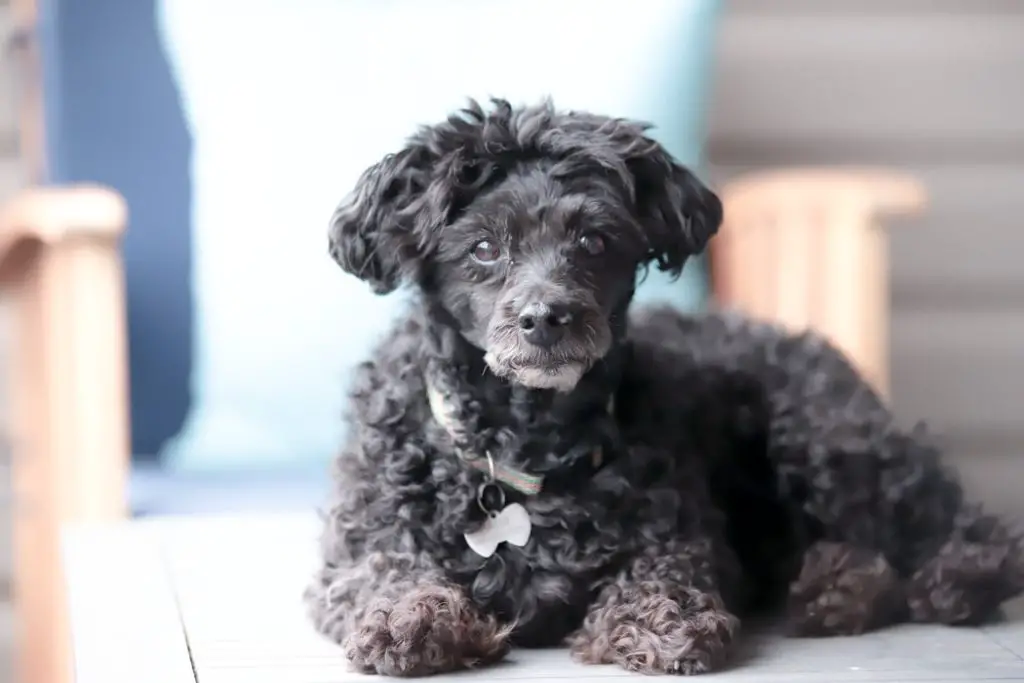
How to Take Care of a Senior Dog and Socialization Tips for Senior Dogs
It’s not often we prioritize socialization for our senior dogs. One way to on how to take care of a senior dog is to have socialization that is appropriate for your dog.
Keep in mind that the older a dog gets, the harder socialization becomes for the dog. The goal with socializing senior dogs isn’t necessary exposure to new situations as much as getting them out to see old experiences.
- There might be an instance where an older dog encounters something they have never seen before or thinks they have never seen before (remembering vision issues and cataracts). Be patience, move very slow if you need to move at all, and praise your dog.
All new experiences could potentially be scary for your dog, watch for signs of irritation or stress.
Dogs, like humans, can be more or less social depending on their personality. If you have a dog that likes to play with other dogs, match their energy levels and size of the dogs. Supervise play and keep it short.
- Supervise your senior dog if they are around children. Your senior dog may not tolerate their energy levels or a child so close to their face.
Owners of senior dogs need to consciously stay calm and relaxed. Respect your dog by giving them space and time to relax themselves.
Related Articles:
- How to Stop a Dog from Pooping in the House at Night
- How to Potty Train an Older Dog in an Apartment
- How to Grind Your Dog’s Nails

How to Take Care of a Senior Dog with Special Grooming Needs
Your dog relies on you to feed them, exercise them, and take care of their physical grooming needs. Grooming entails coat maintenance, cleaning ears, checking eyes, checking teeth, trimming toenails, and cleansing the body and coat.
Now that your dog is aging, you’ll need to adjust your grooming routine based on the needs of your dog. You can often expect changes in their coat, skin, and nails.
4 Skin Changes in Older Dogs
- Dry, flaky skin. Older dog’s sebaceous glands slow down oil production.
- Loss of fur or thinning fur. Be sure to protect any exposed skin from the elements.
- Unusual odor. Skin infections can occur in older dogs with weakened immunity.
- Skin lumps or skin tags. Make a note of any new lumps or changes in your dog’s skin and notify your veterinarian.
How To Take Care Of A Senior Dog and Bathing
Always make sure they have secure footing in the tub or sink. Apply non-slip grips or an anti-slip floor mat to keep your dog steady while bathing.
- Chose the appropriate dog shampoo. You can choose from flea/tick shampoos, whitening shampoo for light-colored dogs, hypoallergenic shampoo for sensitive dogs, and oatmeal-based shampoo for dogs with dry skin.
Use warm water while bathing your dog to make the experience less stressful. After shampooing your dog, make sure you rinse the suds out thoroughly. Shampoo residue can cause unwanted flaking and irritation for your dog.
Importance of bathing your dog
- cleans their skin and coat
- removes loose hair and dirt
- allows you to examine their skin closer
Related Articles:
How To Take Care Of A Senior Dog and FAQ About Grooming
How to take of a senior dog with grooming?
Allow more time for careful grooming of your older dog. Dedicating time in your week for grooming will be a start to keeping up with their changing needs.
What is the biggest challenge with grooming senior dogs?
Your dog might have achy joints, back pain, sore muscles, and not feeling their best. The last thing they want is to have you grab their foot for nail trimming or a cloth to clean their teeth. Move slow, be patient and if needed talk to your veterinarian about pain management strategies.
When are teeth extractions necessary on my older dog?
If the tooth is fractured, infected, or it’s causing your dog pain. Your veterinarian will advise if it’s necessary for the long-term health of your dog.
Why is trimming my dog’s nails crucial to their health?
Your dog’s nails are an extension of their foot and leg. When the nails are too long it sets off the whole body. Dogs will have the feeling of walking uphill and it will decrease their balance.
- Long toenails lead to long term degenerative changes and pain. The dog will experience pain in their knees, hips, and joints. You might see the dog begin to arch their back to compensate.
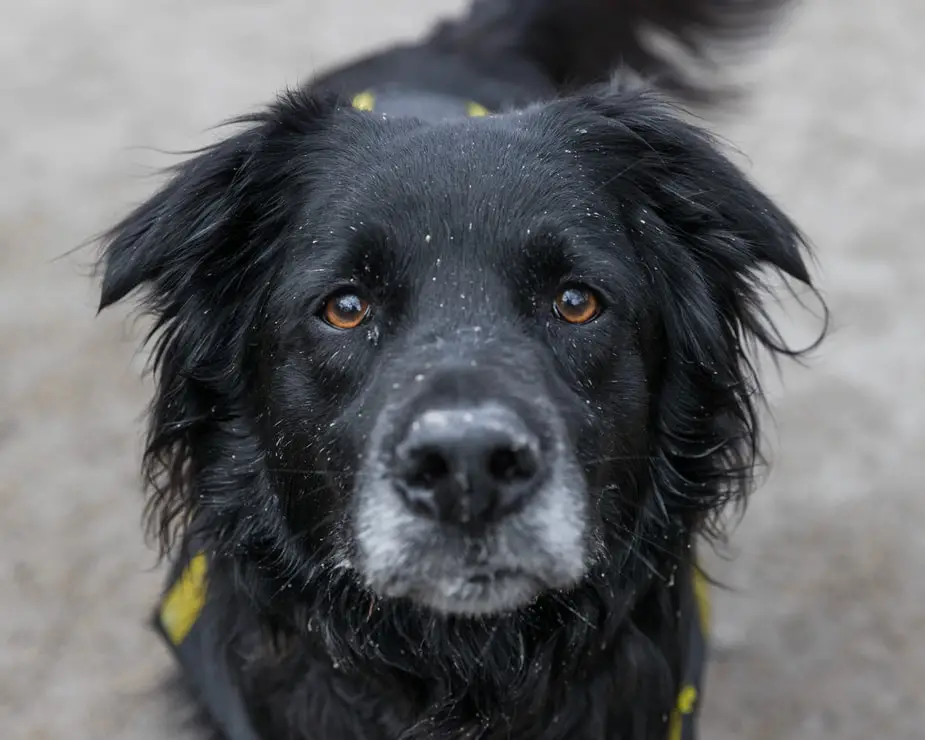
How to Take Care of a Senior Dog and And 4 Tips For Grooming
- Make them comfortable.
- Move slower, especially with bathing, drying, and trimming their coat.
- If you see a professional groomer, ask them about a modified cut that would be easier for your dog.
- Take a break in the middle of grooming.
Remember to prioritize nail trimming and routine grooming. Professional dog groomers can advise on grooming specific coat types and any necessary grooming between visits.
You’ll have your senior dog looking their best!
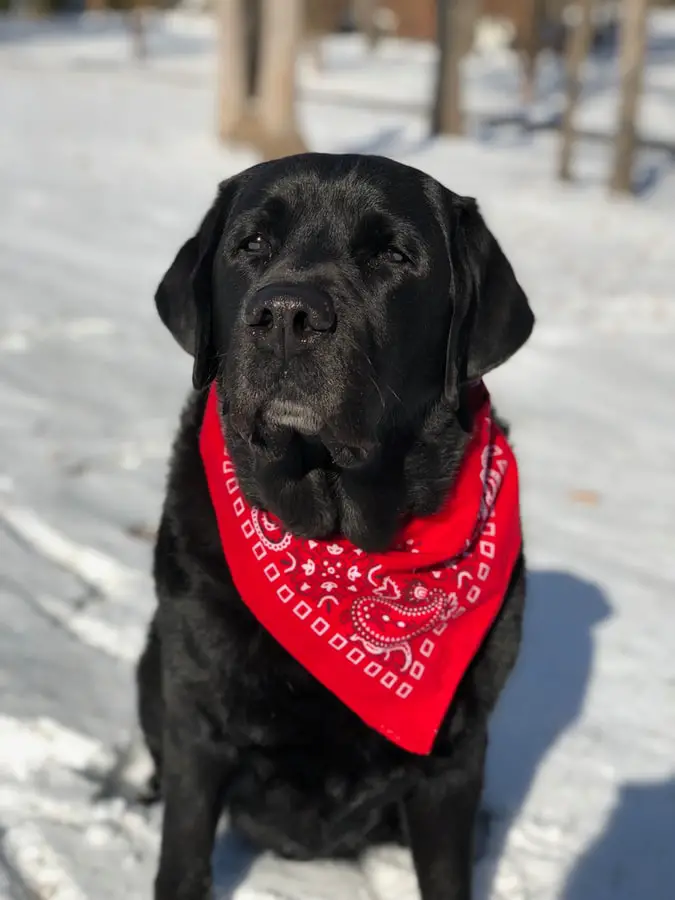
How to Take Care of a Senior Dog and Common Age-Related Health Concerns
Your dog’s age, breed, genetics, activity level and diet all contribute to their health. Canines have common age-related health issues and lesser common health issues.
When learning how to take care of a senior dog, you’ll note that the three most common health concerns are, dementia (also referred to as canine cognitive dysfunction), arthritis, and cancer.
Canine Cognitive Dysfunction (CCD). Dogs with CCD often will progress slowly after the age of eight years. Signs could include restlessness, irritability, aggression, confusion, and disorientation.
Provide a safe area for your aging dog day and night. Ask your veterinarian about possible treatments to slow the progression.
Cancer. Almost 50% of dogs over the age of 10 years develop some type of cancer. Although it can afflict dogs of all ages and all breeds. The breeds that are the most susceptible are Golden Retrievers, Bernese Mountain Dogs, German Shepherds, Boxers, Labrador Retrievers and Rottweilers.
The five most common types of cancer in dogs are mast cell tumors, melanoma, lymphoma, bone cancer, and hemangiosarcoma. Record any lump or bump on your dog and schedule an appointment with your vet. You can direct your questions to them and discuss possible treatments.
Arthritis. This inflammatory disease can cause discomfort, stiffness and decreased mobility in dogs. When a dog’s joints change due to deterioration of cartilage or become damaged, it causes the bones in the joint to rub together, leading to inflammation and pain. Congenital joint disorders can also contribute to arthritis. If your dog is predisposed to arthritis, then prevention is key.
To minimize soreness and pain for your dog; keep them at a healthy weight, include omega-3 fatty acids in their diet, light exercise (swimming is ideal), physical therapy and therapeutic massage for dogs.
What aging signs indicate my dog should see the vet?
Increase panting, change in appetite or thirst, diarrhea, repeat vomiting, change in frequency of urination and defecation, restlessness, obvious pain, changes in weight, and aggression.
Does my senior need any health and age-related supplies?
Orthopedic beds & pillows, washable waterproof pads, diapers, paw wax (Musher’s Secret), and slip-resistant area rugs on wood floors.
What kind of equipment can I use for a dog that has hip or hind end issues?
Ramps or stairs, support harness, pup sling, and elevated dog dishes.

How to Take Care of a Senior Dog and Less Common Health Concerns
The four less common age-related health concerns in canines are liver disease, diabetes, heart disease, and oral infections.
Liver Disease and Disorders. It’s important to know the signs and see your veterinarian for diagnostic tests. Common symptoms include decreased appetite, repeat vomiting, diarrhea, weight loss, increased thirst and urination, and changes in stool color.
The prognosis of liver disease varies depending on the underlying cause and how soon it was diagnosed.
Diabetes. This chronic disease can be diagnosed and managed successfully. It’s not necessarily an age-related illness, however it can occur in dog’s age 5 and older. Symptoms could include excessive thirst, increased urination, weight loss and increased appetite.
Your veterinarian will test your dog’s blood for sugar levels. They will make recommendations for diet changes, encourage routine low impact exercise and possibly insulin injections to effectively manage your dog’s diabetes.
Heart Disease. Many factors contribute to a dog’s heart issues, such as diet, exercise, weight, and breed. Heart disease is a general term given to any number of conditions that interfere with the heart’s function. Symptoms include a dry cough following activity, shortness of breath, rapid weight loss, fainting, or rapid fatigue.
After an examination by your veterinarian, they can discuss the best treatment option, dietary adjustments and possible medications.
Oral Infections. Dogs with a lot of tartar build up can suffer from infections in their mouth. The bacteria could pass into the bloodstream affecting the dog’s heart and kidneys. Talk with your veterinarian for options in oral care.
- Senior dogs can benefit from non-invasive canine therapy such as therapeutic massage, hydrotherapy and physical therapy.
How to Take Care of a Senior Dog with Canine Therapy Options
Hydrotherapy is performing therapeutic exercises on an underwater treadmill. The water level is predetermined by your dog’s height and exercise needs. Senior dogs seem to benefit the most from this type of therapy. The water provides buoyancy for the dog which diminishes the stress around the joints. It’s painless and fun movement for the dog.
Canine Massage Therapy is a full body deep tissue massage that focuses on working and treating soft tissue muscle locations. It reduces stiffness, aids in calming anxiety, reducing inflammation and swelling of joints.
Physical Therapy for Canines uses similar physical therapy techniques as humans. It’s adapted to meet the structure of a dog. The techniques increase mobility of joints and muscles, encourages healing from injuries and reduces pain from age-related diseases.
Learning how to take care of a senior dog is a huge commitment from puppyhood to older adult dog. Now that you are aware of the possible canine age-related health issues you can make your senior feel comfortable and age gracefully.
How to Take Care of a Senior Dog and Vaccine Boosters
At your dog’s bi-annual well-visit to the veterinarian, they will weight your dog, ask for a fecal sample, and suggest any vaccination boosters. It’s important senior dogs have blood and urine tests done once a year before getting vaccine boosters.
Titer testing can be an alternative to an annual vaccine booster. A titer test is an antibody blood test to measure the dog’s immunity against a particular disease or previous vaccines.
- Ask your veterinarian to see if your dog qualifies for titer testing. Often titers are administered to a newly adopted dog with an unknown vaccine history and for senior dogs with unknown immunity levels.
How to Take Care of a Senior Dog and 5 Common Dog Vaccination Recommendations
DHPP – combination vaccination that includes Distemper, Hepatitis, Parainfluenza, Parvovirus. Ask your veterinarian for the booster recommendations.
Rabies Vaccination – is a viral disease of mammals that invades their central nervous system. It is often transmitted by the bite of an animal with rabies. Boosters are required every 3 years in healthy dogs.
- The United States requires all healthy dogs receive a rabies vaccination. The booster requirements vary state to state.
How to Take Care of a Senior Dog and 4 Non-Core Vaccinations
One question about how to take care of a senior dog is to discuss your lifestyle with your veterinarian. You’ll want to see if one of these non-core vaccinations would benefit you and your dog.
Leptospirosis Vaccination – referred to as “Lepto” is a type of bacteria that can be shed by wildlife and is commonly found in standing water. If your dog is at risk, discuss this vaccine with your veterinarian.
Bordetella Vaccination – also known as the kennel cough vaccine. It’s a contagious virus between dogs that give respiratory symptoms. Discuss options with your veterinarian if you plan to board your dog or take them to dog day care.
Influenza Vaccination – the dog flu is a highly contagious respiratory disease caused by canine influenza virus. This vaccine is administered every 1-3 years if your dog lives in a high-risk area.
Lyme Vaccination – Lyme’s disease is caused by bacteria carried by the black legged ticks or “deer” ticks. Vaccination is recommended if your dog is at high risk for tick exposure.
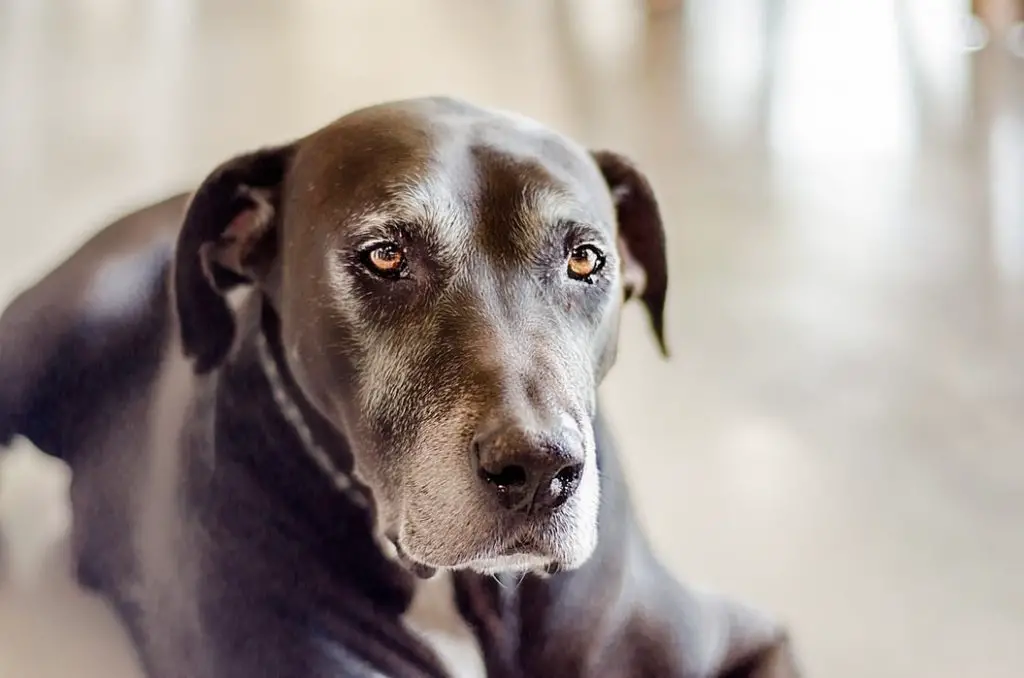
How to Take Care of a Senior Dog with Pet Insurance
Owning a dog can be costly and keeping up with routine vet exams and preventative care could put a strain on your budget. This is especially true when learning how to take care of a senior dog.
Pet insurance may save you thousands of dollars if your pet gets sick, gets injured or needs emergency surgery. It’s important to make this decision before your dog gets sick or injured.
- The first pet insured in United States was Lassie, the famous television dog-hero in 1982.
Although it is best to enroll your dog before they become a senior, many insurance companies will still insure your pet, saving you money in the long-term.
Select your plan based on what you would like covered. You may ask about reimbursement or coverage for the following:
- examination fees
- wellness and preventative care
- dental health
- emergency surgery
- special Rx diets
- hereditary conditions
- end of life care
How to Take Care of a Senior Dog and FAQ On Insurance
Q. Does my dog need a vet exam to qualify for insurance?
Yes, your dog will need a thorough examination from a licensed veterinarian.
Q. What medical records do you need to enroll?
You’ll want to include any previous visits to the vet, laboratory results, and vet notes.
Q. Is pet insurance more expensive for senior dogs?
To make the insurance more affordable, ask for a lower reimbursement percentage. If you have multiple pets, considering insuring them for a discount.
Q. Does pet insurance cover pre-existing conditions like hip dysplasia?
It will depend on the insurance company. Most insurance companies will provide insurance for a dog that is less than six years of age, and they have no clinical signs and symptoms at the time of enrollment.
Q. What is the range of monthly payments for pet insurance?
The cost of pet insurance will depend a lot on the age of your pet, breed, health condition of dog and what you would like your insurance to cover. It can be as low as $15/month and up to $98/month.
Q. Does pet insurance cover euthanasia?
Ask your pet insurance company, as it varies from policy to policy. It might also be listed under “other” in the policy details.
How to Take Care of a Senior Dog and Choosing A Pet Insurance Company
The Top 5 Pet Insurance Companies in the United States:
- Prudent Pet – rate #1 pet insurance on Trustpilot
- Toto Pet Insurance – best pet insurance of 2021 by Forbes Advisor
- Pet Plan Pet Insurance – most comprehensive pet insurance worldwide
- ASPCA Pet Health Insurance – flexible and customizable
- AKC Pet Insurance – one of the first pet insurance companies; customer-focused
It’s best to make this decision before your dog becomes a senior. Start with writing down what you would like covered in your pet insurance plan.
Begin contacting the pet insurance companies of your choice and ask for a quote. Some companies get you a quote right away and others will email you a quote within 24 hours.
Now is the time to reflect on the sweet memories you’ve made with your dog. Dogs certainly offer companionship and loyalty to their human caretakers.
Related Articles:
- A Review of the 5 Best High Fiber Dog Foods For Anal Gland Problems
- The 5 Pawsitively Best Dog Nail Grinders
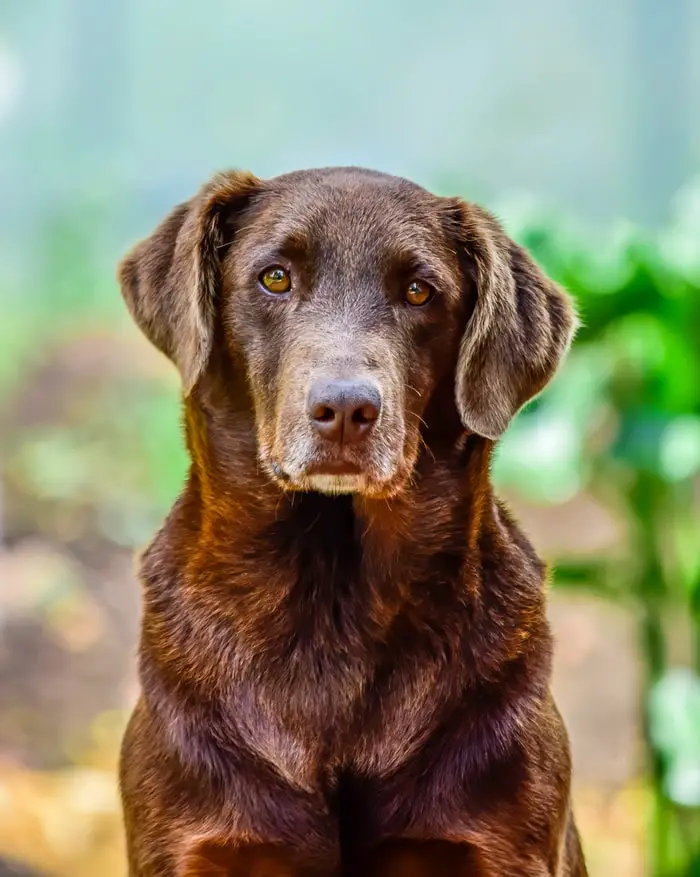
10 Key Points How to Take Care of a Senior Dog
- You will reap the benefits of owning and adopting a senior dog.
- Several dog breeds come with predisposed age-related health issues; know more about your dog breed.
- Our dogs want us to know the changes that occur physically and mentally as they age.
- Senior dog’s nutritional needs change as they age, one area is an increase in protein to maintain muscle mass.
- Accidents may occur in the house; keep a routine, take your dog out more often, and use waterproof hospital pads for their sleeping areas.
- Gentle physical exercise and stimulating mental exercise will keep your dog feeling younger. Older dogs will enjoy the stimulation of using their nose, swimming and food puzzles.
- Senior dogs may like routine socialization. Always supervise them around children and younger dogs.
- Plan to groom a senior dog more often; remember to move slow, trim nails regularly and clean their teeth.
- Dogs, just like humans, have age-related health issues. When you notice any unusual symptoms, make an appointment with your veterinarian for an exam. During an annual exam, discuss titers versus vaccine boosters for your senior dog.
- Pet insurance is a budget-friendly way to afford routine care and emergency care for your senior dog.
When you take a moment, you can see a lifetime of love reflected in your dog’s eyes. Older dogs are wise, loving and indeed wonderful companions!
“No animal has ever abandoned a person due to illness or old age.”
Please read our Legal Disclaimer
